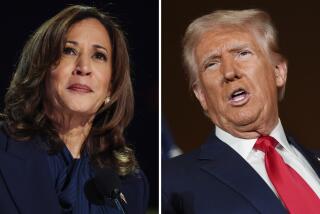Clarifying Top Federal Tax Rate
- Share via
Your editorial “The Capital Gains Tax Muddle” (Sept. 26) reflects the misunderstanding most taxpayers have of current federal income tax rates.
You stated, in part, “And the new tax rates contain a quirk by which a couple’s taxable income of between $77,850 and $177,720 a year is assessed at 33% while all other income above that enjoys a maximum rate of 28%. That should be fixed. Democrats would raise the maximum tax rate for all the higher brackets to 33%.”
This suggests that higher income taxpayers receive an unfair advantage--not so. Congress tried in 1986 to simplify the tax law by establishing just two rates, 15% and 28%. Prior to 1987 there were 14 rates for couples and 15 for singles, ranging from 11% to 50%
To offset this change, numerous deductions and other benefits were eliminated. The new law also changed the historic procedure where every taxpayer, regardless of income, paid on the first portion of income at the lowest rate, the next portion at the next lowest rate, on up to the highest rate.
Now, beginning at a certain level of income (you indicate $77,850), the lower rate is phased out. This is accomplished by adding a 5% surtax to the regular 28% rate until all income taxed at the 15% rate has been increased to 28%. Additionally, the surtax continues until the credit for personal exemptions has been eliminated. Thereafter, the surtax is ended, and all additional income is taxed at the 28% rate.
It is understandable that most people conclude that there is a 33% rate for the upper middle-income taxpayer, and a lesser rate for higher income taxpayers. IRS publications and tax-rate schedules shed no light on this matter.
I am not forgiving of politicians who understand the procedure and try to describe what would just be a tax increase as correcting an inequity. If they want to increase taxes, fine, but don’t con us.
JAMES R. POLLEY
San Gabriel
More to Read
Inside the business of entertainment
The Wide Shot brings you news, analysis and insights on everything from streaming wars to production — and what it all means for the future.
You may occasionally receive promotional content from the Los Angeles Times.










